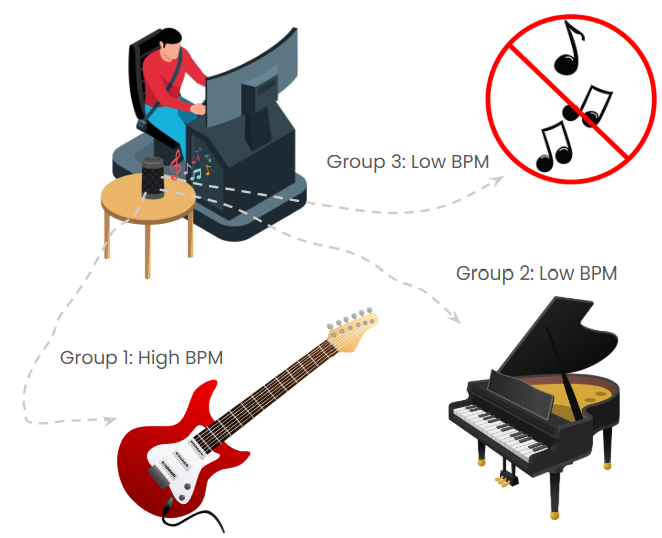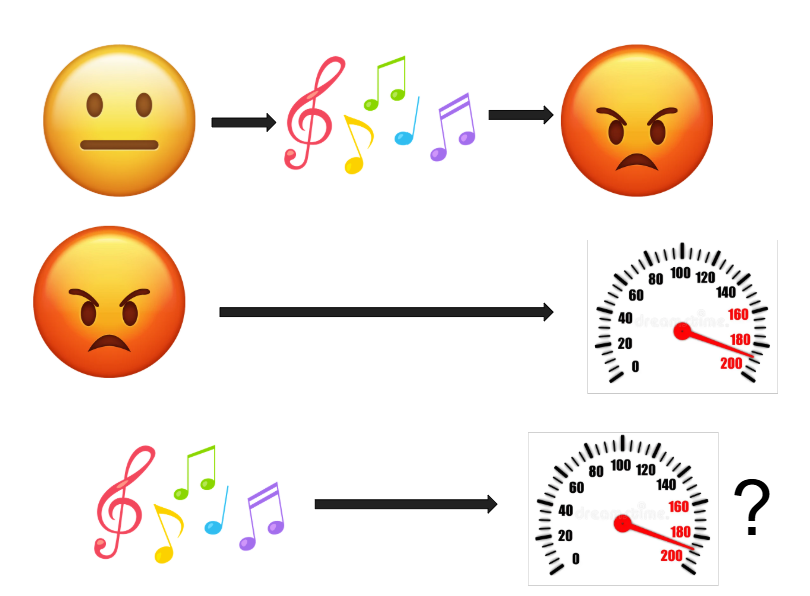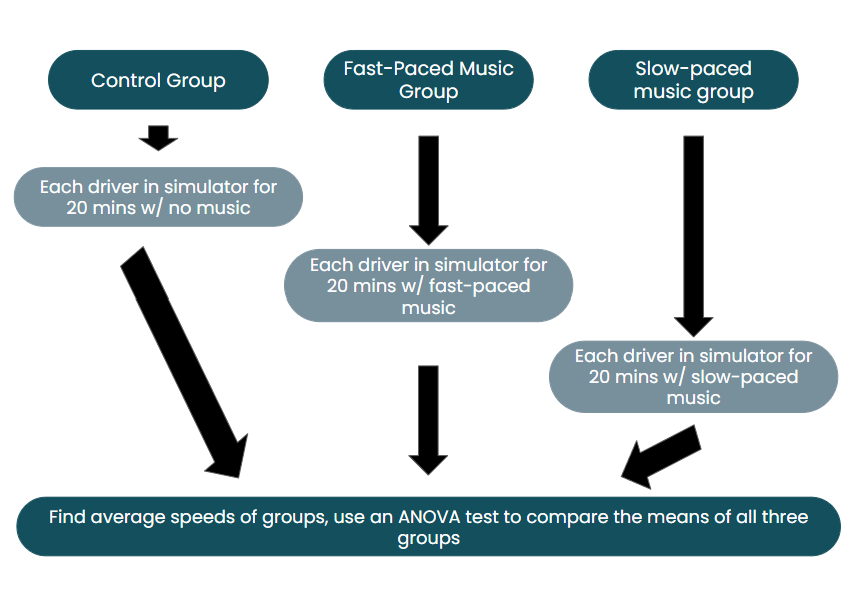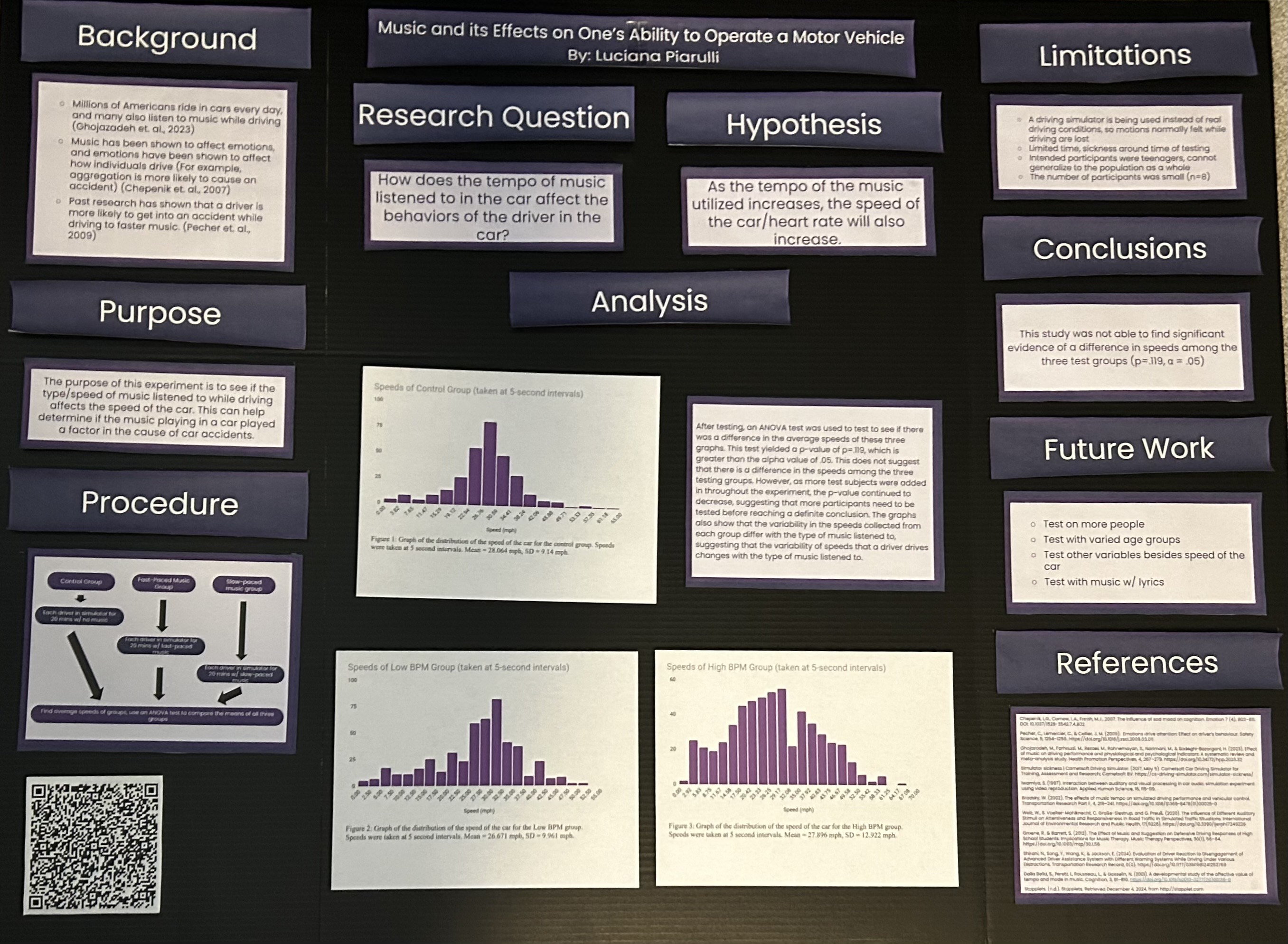In STEM I, we’re conducting a research project based on our own
passions and ideas. This starts with a lot of background on your topic of interest.
You then develop an idea for your project, and then develop an approach for collecting data!
This project focuses on how the tempo of music affects the speed at which a person drives
in a car.
References
Alimohammadi, I., Zokaei, M., & Sandrock, S. (2015). The Effect of Road Traffic Noise on Reaction Time. Health Promotion Perspectives, 5(3), 207–214. https://doi.org/10.15171/hpp.2015.025
Arnett, J.J., Irwin, C.E., Halpern-Felsher, B.L., (2002). Developmental sources of crash risk in young drivers. Inj. Prev. 8(2), 17–21.
Ashby, F. G., Isen, A. M., Turken, A. U. (1999). A neuropsychological theory of positive affect and its influence on cognition. Psychological Review, 106(3), 529–550. https://doi.org/10.1037/0033-295X.106.3.529
Atchley, P., & Chan, M. (2011). Potential Benefits and Costs of Concurrent Task Engagement to Maintain Vigilance: A Driving Simulator Investigation. Human Factors, 53(1), 3–12.
Betts, S.L. (2009, March 12). Taylor Swift’s ‘Love Story’ Encourages Safe Driving? The Boot. https://theboot.com/taylorswifts-love-story-encourages-safe-driving/. Accessed November 8, 2024
Beullens, K., & Van den Bulck, J. (2007). News, music videos and action movie exposure and adolescents’ intentions to take risks in traffic. Accident Analysis & Prevention, 40(1), 349–356. https://doi.org/10.1016/j.aap.2007.07.002
Bowles, L. R., & Heath-Coleman, R. A. (1976). Electrodes (U.S. Patent No. 3,942,517). U.S. Patent and Trademark Office. https://patentimages.storage.googleapis.com/20/48/f7/87fb2d666c5f3b/US3942517.pdf
Brodsky, W. (2002). The effects of music tempo on simulated driving performance and vehicular control. Transportation Research Part F, 4(4), 219–241. https://doi.org/10.1016/S1369-8478(01)00025-0
Chepenik, L.G., Cornew, L.A., Farah, M.J., 2007. The influence of sad mood on cognition. Emotion 7(4), 802–811. DOI: 10.1037/1528-3542.7.4.802
Dalla Bella, S., Peretz, I., Rousseau, L., & Gosselin, N. (2001). A developmental study of the affective value of tempo and mode in music. Cognition, 80(3), B1–B10. https://doi.org/10.1016/s0010-0277(00)00136-0
Ghojazadeh, M., Farhoudi, M., Rezaei, M., Rahnemayan, S., Narimani, M., & Sadeghi-Bazargani, H. (2023). Effect of music on driving performance and physiological and psychological indicators: A systematic review and meta-analysis study. Health Promotion Perspectives, 13(4), 267–279. https://doi.org/10.34172/hpp.2023.32
Groene, R., & Barrett, S. (2012). The Effect of Music and Suggestion on Defensive Driving Responses of High School Students: Implications for Music Therapy. Music Therapy Perspectives, 30(1), 56–64. https://doi.org/10.1093/mtp/30.1.56
Iwamiya, S. (1997). Interaction between auditory and visual processing in car audio: simulation experiment using video reproduction. Applied Human Science, 16(3), 115-119.
Khalfa, S., Roy, M., Rainville, P., Dalla Bella, S., Peretz, I., 2008. Role of tempo entrainment in psychophysiological differentiation of happy and sad music. International Journal of Psychophysiology 68(1), 17–26. https://doi.org/10.1016/j.ijpsycho.2007.12.001
Landsel, D. (2024, December 7). The “most dangerous” christmas song you should never listen to while driving - and why it could cause an accident. New York Post. https://nypost.com/2024/12/07/lifestyle/the-most-dangerous-christmas-song-to-listen-to-while-driving/
Mcpeck, J. P., Principe, K. M. (2008). Device and method for performing electroencephalography (European Patent No. 08847101.6). European Patent Office. https://patentimages.storage.googleapis.com/13/58/2c/93019c9c9f63d3/EP2211712B1.pdf
Pecher, C., Lemercier, C., & Cellier, J. M. (2009). Emotions drive attention: Effect on driver’s behaviour. Safety Science, 47(9), 1254–1259. https://doi.org/10.1016/j.ssci.2009.03.011
Shirani, N., Song, Y., Wang, K., & Jackson, E. (2024). Evaluation of Driver Reaction to Disengagement of Advanced Driver Assistance System with Different Warning Systems While Driving Under Various Distractions. Transportation Research Record, 0(0). https://doi.org/10.1177/03611981241252789
van Atteveldt, N., Janssen, T. W. P., & Davidesco, I. (2020, August 11). Measuring Brain Waves in the Classroom. Frontiers for Young Minds. https://kids.frontiersin.org/articles/10.3389/frym.2020.00096/full
Welz, W., Voelter-Mahlknecht, S., Große-Siestrup, C., Preuß, G. (2020). The Influence of Different Auditory Stimuli on Attentiveness and Responsiveness in Road Traffic in Simulated Traffic Situations. International Journal of Environmental Research and Public Health, 17(24) https://doi.org/10.3390/ijerph17249226







